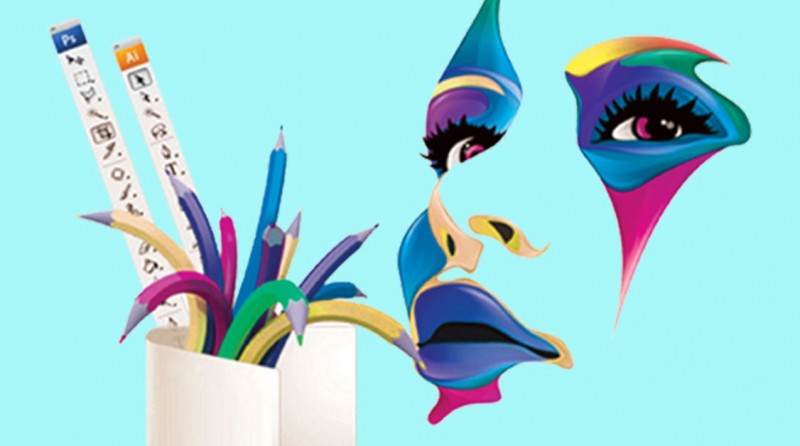
Graphic design is a captivating field that merges artistic expression with effective communication. It plays a crucial role in various industries, ranging from advertising and marketing to web design and brand development. By combining visual elements, typography, and creativity, graphic designers have the power to convey messages, evoke emotions, and captivate audiences. In this article, we will delve into the diverse and dynamic world of graphic design, exploring its key components, significance, and its impact on various aspects of modern society.
Introduction to Graphic Design
Graphic design is a creative discipline that involves crafting visual content to communicate messages effectively. It encompasses a wide range of mediums, including digital graphics, print materials, logos, advertisements, and more. Graphic designers utilize their artistic skills and technical knowledge to create visually appealing designs that resonate with the intended audience. This field blends art, technology, and communication to produce compelling visuals that convey ideas, concepts, and information.
Historical Evolution of Graphic Design
Throughout history, graphic design has evolved alongside advancements in technology, cultural shifts, and artistic movements. From ancient cave paintings and hieroglyphics to the invention of the printing press in the 15th century, the evolution of graphic design has been intertwined with human expression and communication. The Industrial Revolution brought about mass production and the rise of advertising, further fueling the demand for graphic design. With the advent of computers and digital technology, graphic design entered a new era, expanding its possibilities and reaching wider audiences.
Elements of Graphic Design
In graphic design, various elements work together to create visually appealing and impactful designs. These elements include line, shape, color, texture, space, and form. Lines can convey movement or guide the viewer's eye, while shapes add structure and define objects within a design. Colors evoke emotions and communicate messages, while texture adds depth and tactile qualities. Space and form contribute to the overall composition and arrangement of visual elements, creating balance, emphasis, and harmony.
The Role of Color and Typography
Color and typography are two essential components of graphic design that significantly influence the message and perception of a design. Colors evoke emotions and associations, allowing designers to create specific moods and convey meanings. Typography, on the other hand, involves selecting and arranging fonts, ensuring readability and visual coherence. The careful choice of typefaces can communicate a brand's personality, establish hierarchy, and enhance the overall visual impact of a design.
Graphic Design in Advertising and Marketing
In the realm of advertising and marketing, graphic design plays a crucial role in capturing attention and conveying messages effectively. From eye-catching billboards to engaging social media posts, graphic design is employed to create visually compelling advertisements that leave a lasting impression. By utilizing persuasive imagery, typography, and layout, graphic designers can help businesses communicate their brand identity, promote products and services, and connect with their target audience on an emotional level.
Web Design and User Experience
With the rapid growth of the internet, web design has emerged as a vital aspect of graphic design. Web designers leverage their skills to create visually appealing and user-friendly websites that provide seamless navigation and optimal user experience. They consider factors such as layout, color schemes, typography, and interactive elements to ensure a harmonious blend of aesthetics and functionality. Effective web design enhances engagement, encourages conversions, and strengthens brand credibility.
Brand Identity and Logo Design
Creating a strong brand identity is essential for any business or organization. Graphic designers play a pivotal role in developing brand identities through logo design, visual elements, and consistent branding guidelines. Logos are the face of a brand and serve as visual representations of its values, mission, and offerings. Skillfully designed logos leave a lasting impression and foster brand recognition. Graphic designers work closely with clients to understand their vision and create unique logos that embody the essence of their brand.
Graphic Design in Print Media
Despite the digital revolution, print media continues to be an influential platform for graphic design. From magazines and newspapers to brochures and packaging, print materials require thoughtful design and layout to captivate readers and convey information effectively. Graphic designers utilize their skills to create visually engaging layouts, select appropriate fonts, and ensure the harmonious integration of text and images. Print design requires meticulous attention to detail and an understanding of the printing process to produce high-quality results.
Significance of Visual Communication
Visual communication is a powerful tool that transcends language barriers and engages audiences across diverse backgrounds. Graphic design serves as a universal language, enabling effective communication through visual storytelling. It combines images, symbols, and text to convey messages quickly and concisely, leaving a lasting impact on viewers. By harnessing the principles of visual communication, graphic designers have the ability to evoke emotions, provoke thoughts, and inspire action.
The Future of Graphic Design
As technology continues to advance, the future of graphic design holds immense possibilities. With the rise of virtual reality, augmented reality, and artificial intelligence, graphic designers can explore new realms of creativity and interactivity. Designers will need to adapt to emerging technologies and trends, mastering new tools and techniques to stay relevant in a rapidly evolving digital landscape. The integration of design thinking and sustainability will also play a significant role in shaping the future of graphic design.
Conclusion
Graphic design is a multifaceted discipline that blends artistic expression with effective communication. Through the skillful combination of visual elements, typography, and creativity, graphic designers have the power to captivate audiences, convey messages, and shape perceptions. From advertising and marketing to web design and brand identity, graphic design influences various aspects of our modern world. By exploring the world of graphic design, we gain a deeper appreciation for its significance and its ability to merge artistry with communication.
Exploring the World of Virtual Assistants
Global Foldable Smartphone Market Shows Resilience with Strong Growth in Q1 2023